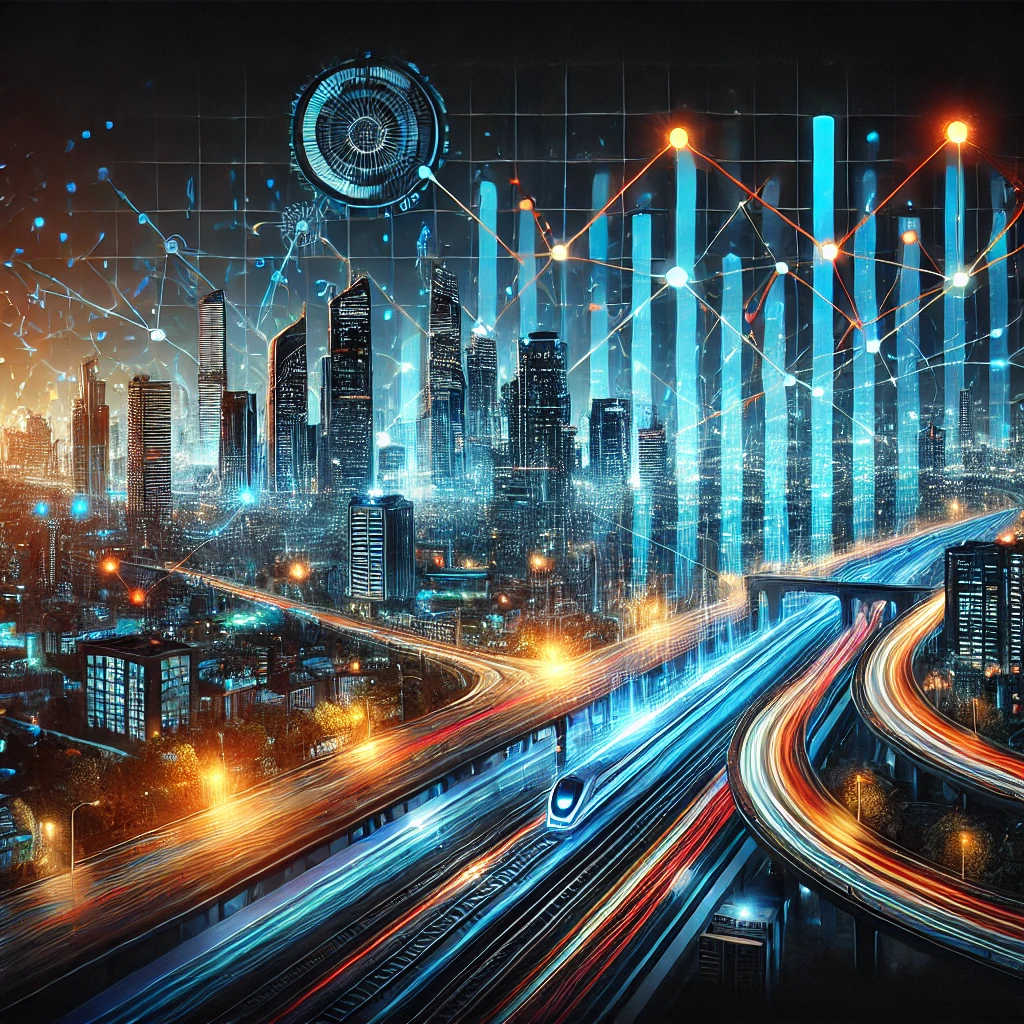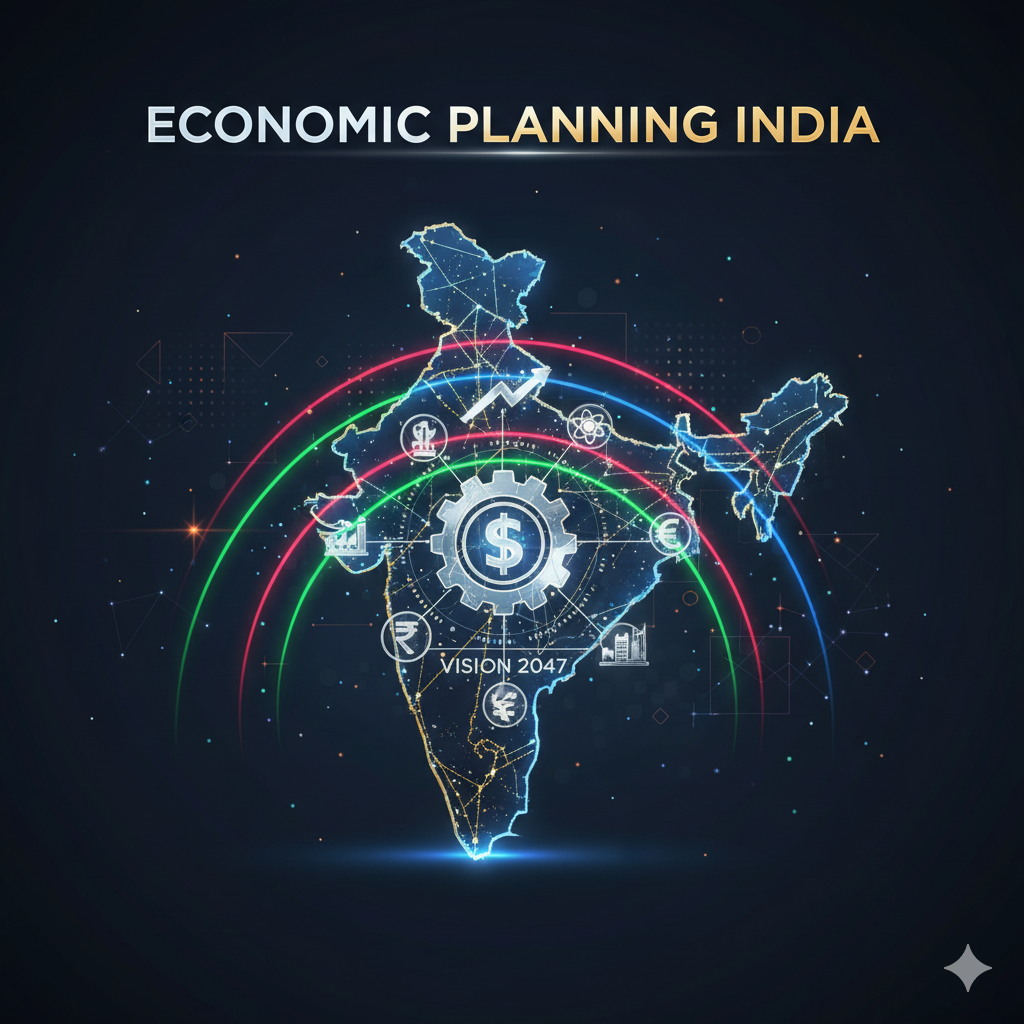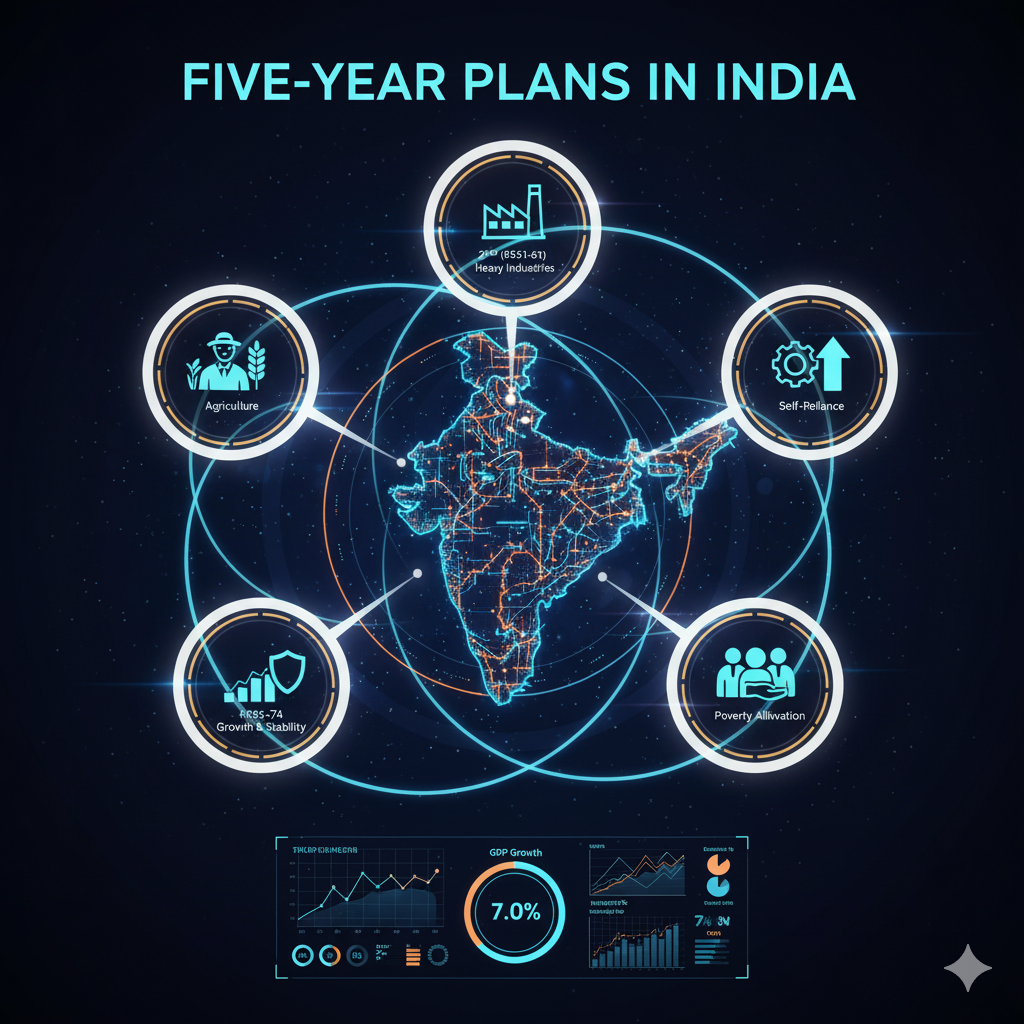Infrastructure development plays a crucial role in the economic growth of any nation. It serves as the backbone of a country’s progress by improving connectivity, enhancing productivity, and attracting investments. For a developing economy like India, well-planned infrastructure development is essential for sustained growth, job creation, and improved living standards. The Indian government has launched several initiatives to enhance infrastructure, spanning transportation, energy, digital connectivity, and urban development.
This article delves into the importance of infrastructure for economic growth and analyzes the Indian government’s initiatives in this sector.
1. Importance of Infrastructure Development for Economic Growth
1.1 Boosts Economic Productivity and Efficiency
A well-developed infrastructure network reduces production and transaction costs, making businesses more competitive. Roads, railways, and ports ensure the smooth transportation of goods, reducing delays and wastage. Efficient power supply and digital infrastructure also improve industrial output and service delivery.
1.2 Attracts Domestic and Foreign Investments
Investors prefer countries with robust infrastructure as it reduces operational risks and enhances profitability. A strong transport network, uninterrupted power supply, and modern logistics systems create a favorable business environment. Foreign Direct Investment (FDI) flows into sectors where infrastructure is advanced, driving economic growth.
1.3 Generates Employment Opportunities
Infrastructure projects create direct employment in construction, engineering, and manufacturing. Indirectly, improved infrastructure boosts job creation in industries such as logistics, tourism, and retail. The development of smart cities, highways, and industrial corridors contributes significantly to employment generation.
1.4 Enhances Quality of Life
Infrastructure development directly impacts the quality of life by providing better roads, housing, sanitation, and healthcare facilities. Improved public transport reduces commuting time, modern electricity grids ensure uninterrupted power supply, and digital infrastructure enhances access to education and financial services.
1.5 Reduces Regional Disparities
Infrastructure development helps bridge the gap between urban and rural areas. Remote regions gain access to better transport, healthcare, and education, leading to balanced economic growth across the country. It also promotes industrialization in underdeveloped areas, reducing migration pressure on cities.
1.6 Strengthens Global Competitiveness
A nation’s global competitiveness depends on the efficiency of its infrastructure. Countries with advanced transport, energy, and digital infrastructure rank higher in global economic indices. Improved logistics and connectivity enable businesses to integrate into global supply chains, boosting exports.
2. Indian Government’s Infrastructure Development Initiatives
Recognizing the pivotal role of infrastructure, the Indian government has launched various initiatives to improve connectivity, modernize urban areas, and enhance industrial capabilities. These initiatives span multiple sectors, including roads, railways, energy, digital connectivity, and urban development.
2.1 Bharatmala Pariyojana – Strengthening Road Connectivity
Bharatmala Pariyojana is a flagship highway development project aimed at enhancing road connectivity across India. The program focuses on:
- Expanding national highways to decongest existing road networks.
- Developing expressways and economic corridors to improve trade and logistics.
- Strengthening border and coastal connectivity to boost international trade.
- Improving access to remote and rural areas.
By developing world-class highways, Bharatmala Pariyojana facilitates faster movement of goods and passengers, boosting economic activity.
2.2 Sagarmala Project – Maritime Infrastructure Development
The Sagarmala project aims to harness India’s vast coastline and improve maritime logistics. Key objectives include:
- Developing modern ports and coastal infrastructure to reduce shipping costs.
- Enhancing port connectivity through rail, road, and inland waterways.
- Promoting coastal shipping and inland water transport for efficient cargo movement.
- Encouraging port-led industrialization and maritime tourism.
Sagarmala enhances India’s trade competitiveness by reducing logistics costs and improving export efficiency.
2.3 National Rail Plan (NRP) – Modernizing Rail Infrastructure
Indian Railways is a key pillar of India’s infrastructure. The National Rail Plan focuses on:
- Upgrading railway tracks, stations, and terminals for better efficiency.
- Increasing the share of rail freight to reduce road congestion.
- Introducing high-speed rail projects, including the Mumbai-Ahmedabad bullet train.
- Electrification of railway routes to enhance sustainability.
A modernized railway network boosts trade, reduces transportation costs, and supports sustainable economic growth.
2.4 Pradhan Mantri Gram Sadak Yojana (PMGSY) – Rural Road Connectivity
PMGSY aims to provide all-weather road connectivity to rural areas. The initiative:
- Enhances access to markets, healthcare, and education for rural populations.
- Facilitates rural entrepreneurship and economic activities.
- Reduces migration pressure on cities by improving village-level infrastructure.
Better rural connectivity bridges the urban-rural divide, fostering inclusive growth.
2.5 Smart Cities Mission – Urban Development and Modernization
The Smart Cities Mission focuses on transforming urban areas with:
- Smart infrastructure, including efficient water and electricity management.
- Improved public transportation and traffic management systems.
- Digitization of governance for better service delivery.
- Sustainable urban planning with green spaces and pollution control measures.
By improving urban infrastructure, the Smart Cities Mission enhances the quality of life and attracts investments.
2.6 Ujjwal DISCOM Assurance Yojana (UDAY) – Power Sector Reforms
UDAY aims to improve the financial health of power distribution companies (DISCOMs) and ensure reliable electricity supply. The scheme:
- Reduces power losses and improves efficiency in electricity distribution.
- Encourages renewable energy adoption, including solar and wind power.
- Enhances rural electrification and industrial power supply reliability.
Reliable electricity supply is crucial for industrial productivity and household welfare.
2.7 Digital India – Expanding Digital Infrastructure
Digital India aims to transform India into a digitally empowered society. The initiative includes:
- Expanding high-speed internet connectivity, including in rural areas.
- Promoting e-governance, digital banking, and online education.
- Encouraging digital entrepreneurship and startups.
A strong digital infrastructure boosts the IT industry, enhances financial inclusion, and drives innovation.
2.8 Gati Shakti – National Master Plan for Infrastructure
Gati Shakti is an integrated approach to infrastructure development, focusing on:
- Multi-modal connectivity to reduce logistics costs.
- Coordinated planning across ministries to avoid project delays.
- Use of geospatial technology for real-time project monitoring.
By streamlining infrastructure development, Gati Shakti enhances economic efficiency and investment attractiveness.
2.9 Industrial Corridors – Boosting Manufacturing and Trade
Industrial corridors such as the Delhi-Mumbai Industrial Corridor (DMIC) and Chennai-Bangalore Industrial Corridor aim to:
- Develop world-class manufacturing hubs.
- Improve transport and logistics for industries.
- Enhance export competitiveness.
These corridors attract investment, generate jobs, and strengthen India’s position in global trade.
3. Challenges in Infrastructure Development
Despite progress, India faces several challenges in infrastructure development:
- Funding Constraints: Infrastructure projects require significant capital, and funding gaps often delay execution.
- Land Acquisition Issues: Delays in acquiring land for projects hinder progress.
- Regulatory Hurdles: Complex approval processes slow down infrastructure development.
- Environmental Concerns: Infrastructure expansion must balance economic growth with environmental sustainability.
- Project Execution Delays: Bureaucratic inefficiencies and poor coordination lead to cost overruns and delays.
4. The Way Forward
To accelerate infrastructure growth, India must focus on:
- Public-Private Partnerships (PPPs) to leverage private investment.
- Efficient Land and Project Management to minimize delays.
- Sustainable Infrastructure Development with green energy and eco-friendly technologies.
- Digital and Smart Solutions to optimize resource use and service delivery.
Conclusion
Infrastructure development is fundamental to India’s economic growth, enhancing productivity, investment inflows, and quality of life. The government’s initiatives in transportation, power, digital connectivity, and urban development have significantly improved the country’s infrastructure landscape. However, addressing funding, regulatory, and environmental challenges is essential for sustained progress. With strategic planning and efficient execution, India can achieve its vision of becoming a global economic powerhouse through robust infrastructure development.




